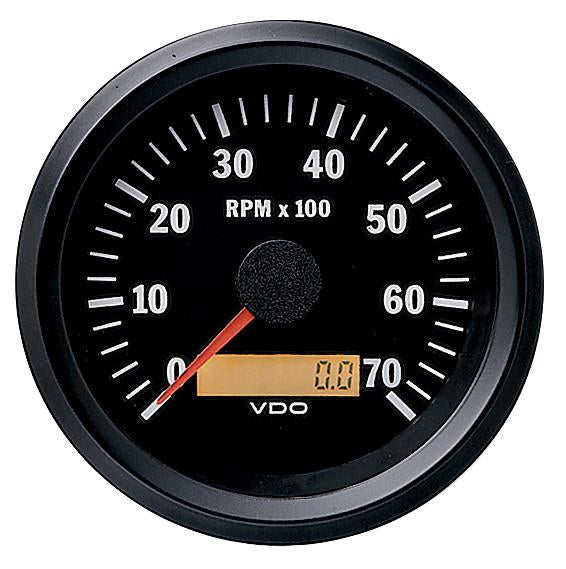Tachometer Buying Overview: Attributes to Seek and Ideal Brand names
Tachometer Buying Overview: Attributes to Seek and Ideal Brand names
Blog Article
The Importance of a Tachometer in Monitoring Engine Rate and Efficiency in Automotive Applications
In the realm of auto engineering, the tachometer stands as a crucial instrument in the vehicle driver's arsenal, providing a direct home window into the inner workings of an automobile's engine. Past its function as a simple scale of transformations per min (RPM), the tachometer serves as an essential device for enthusiasts and experts alike, supplying real-time insights right into engine efficiency and wellness.
Significance of Monitoring Engine RPM
Checking engine RPM, or revolutions per minute, is an essential facet of automotive upkeep and performance examination. Engine RPM straight associates with the speed at which the engine's crankshaft rotates, showing just how quickly the engine is running - tachometer. By keeping an eye on RPM, technicians can analyze the wellness of the engine, discover prospective issues, and fine-tune efficiency. An unusual RPM reading might indicate troubles such as engine misfires, faulty trigger plugs, or issues with the gas delivery system. Regularly high RPM readings could suggest hostile driving behaviors or the need for a greater equipment shift to improve gas effectiveness.
Furthermore, checking engine RPM is important for efficiency evaluation in racing and high-performance lorries. In recap, keeping track of engine RPM is not just vital for discovering issues however additionally for optimizing engine performance in different auto applications.

Advantages of Real-Time Information
In automobile applications, real-time information plays a critical function in supplying instantaneous understandings into the performance and condition of the lorry. By continuously keeping an eye on numerous criteria such as engine rate, temperature level, gas intake, and more, real-time information offers various benefits that contribute to enhanced efficiency and safety when traveling.
One considerable advantage of real-time data is its ability to alert chauffeurs and service technicians to any kind of abnormalities or problems immediately. This positive strategy makes it possible for fast recognition of possible troubles, permitting for prompt treatments to avoid additional damage or breakdowns. In addition, real-time information assists in efficiency optimization by providing prompt responses on driving routines and engine effectiveness. Vehicle drivers can adjust their actions in real-time based upon this info to accomplish better gas economic climate and prolong the life-span of their lorry.

Moreover, real-time data plays a vital function in modern-day vehicle diagnostics, enabling service use this link technicians to quickly identify and address breakdowns. This leads to minimized downtime, reduced maintenance expenses, and inevitably, enhanced general vehicle dependability and long life (tachometer). By utilizing the power of real-time information, automobile stakeholders can make enlightened decisions that positively affect both the efficiency and durability of the lorry
Effect on Gear Shifts
Effective equipment shifts in automobile applications considerably affect total performance and driving experience. The tachometer plays an important duty in optimizing gear shifts by supplying real-time engine rate information to the driver. When approaching the redline on the tachometer, it indicates the vehicle driver to upshift to stop over-revving the engine and triggering prospective damages. On the various other hand, downshifting at the right moment can assist preserve the engine in its power band, making certain responsive acceleration when required.
Moreover, the tachometer aids in achieving smoother gear transitions, particularly in hands-on transmissions. By checking engine speed, vehicle drivers can carry out equipment shifts at the optimal RPM range, decreasing jerking motions and reducing wear on the transmission elements. This accuracy in equipment changes not only enhances driving convenience but additionally contributes to sustain effectiveness.
Enhancing Gas Effectiveness
Provided the important function the tachometer plays in optimizing equipment shifts for efficiency and engine health and wellness, it directly adds to taking full advantage of fuel performance in automobile applications. By providing real-time responses on engine speed, the tachometer aids motorists in maintaining one of the most visit our website effective RPM array for fuel economy. When motorists regularly check the tachometer and change their motoring practices accordingly, they can prevent unneeded fuel intake triggered by over-revving or hauling the engine.
In addition, the tachometer helps chauffeurs determine the most fuel-efficient equipment to be in at any kind of provided minute, preventing the engine from working more challenging than needed. In verdict, the tachometer serves as an important tool in boosting gas performance by advertising optimum driving behaviors and identifying areas for improvement in the car's efficiency.

Maximizing Engine Durability
The tachometer's duty in checking engine rate and efficiency contributes in making certain the longevity of automotive engines. By utilizing the tachometer efficiently, chauffeurs can optimize engine long life with mindful RPM management. Consistently revving an engine too expensive can bring about too much deterioration on important elements, such as the pistons, shutoffs, and bearings. In time, this can lead to reduced engine efficiency and potential malfunctions. Keeping an eye on the tachometer enables drivers to stay within the recommended RPM array for their automobile, protecting against unnecessary pressure on the engine and prolonging its lifespan.

Conclusion
Finally, the tachometer plays a critical function in monitoring engine rate and performance in auto applications. By offering real-time information on RPM, it permits efficient equipment changes, improved gas effectiveness, and made the most of engine long life. This tool is crucial for preserving optimum engine performance and making certain the general capability of a car.
Report this page